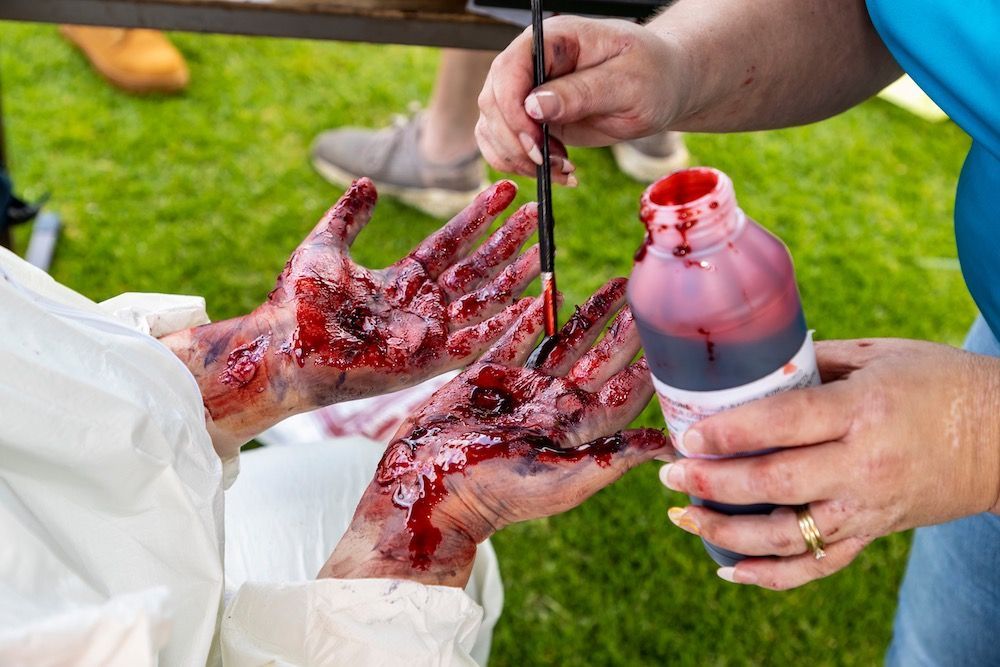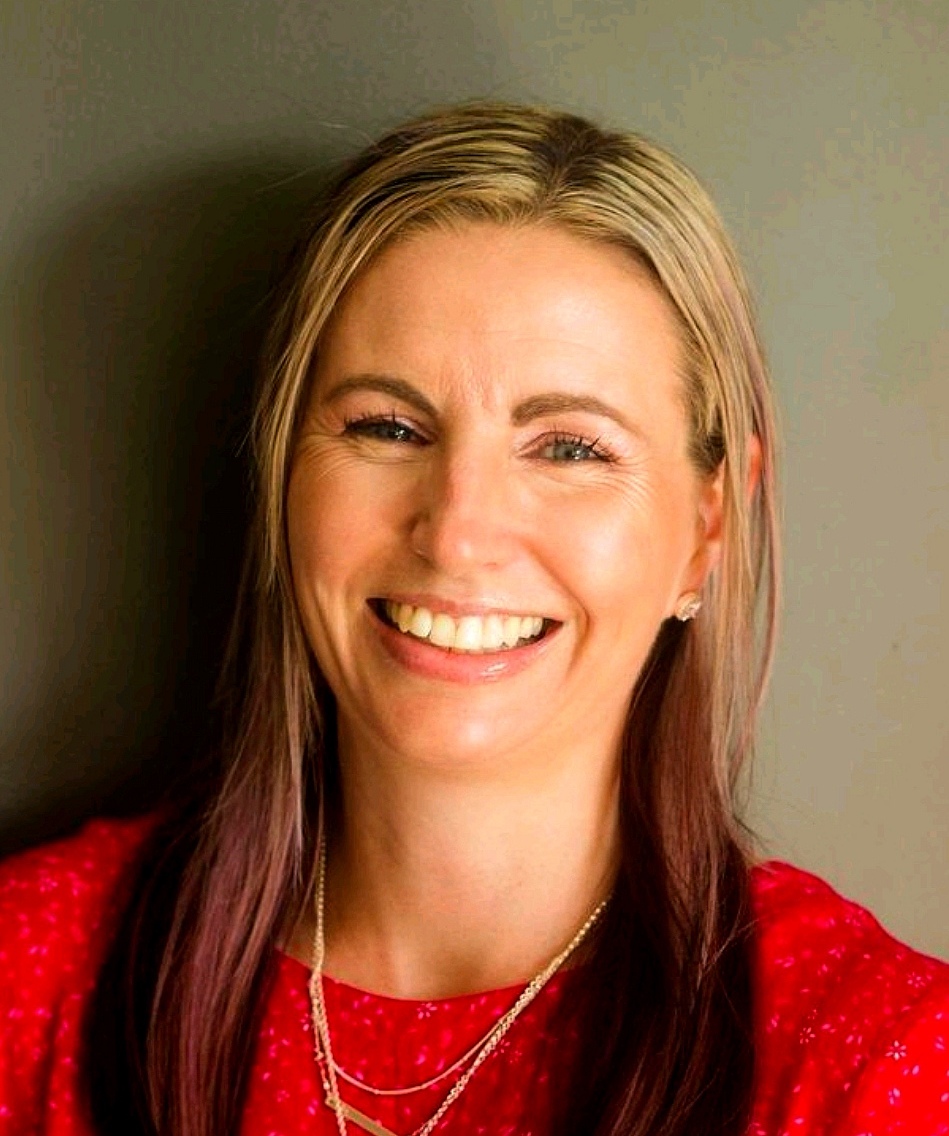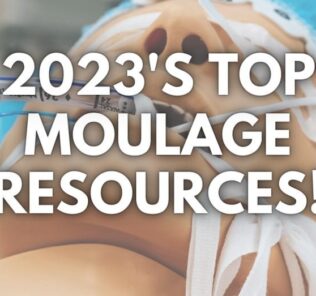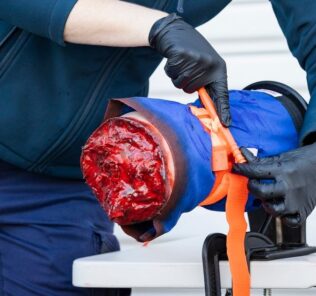How to Start out with Basics of Healthcare Simulation Moulage
Moulage applied for healthcare simulation is a skill that can easily be taught or learned to increase fidelity for the learners. Extravagant art and talent are not always required or necessary to be impactful. Moulage is the process of creating lifelike injuries and symptoms for clinical simulation scenarios to enhance the realism of the case. Moulage serves as a tool to enhance the authenticity and educational impact of healthcare simulation. This article by Erin Carn-Bennett, MSN, RN, is aimed for healthcare simulation staff at the start of their moulage journey around the basic skills for moulage, considerations, and justification for the use of moulage.
The Power of Moulage in Healthcare Education
At the center of effective high-fidelity healthcare simulation lies effective moulage techniques. In healthcare simulation moulage, medical knowledge converges with artistic skill to replicate injuries, illnesses, and anatomical signs and symptoms. Moulage assists teams with decisions for treatment and the course of how the healthcare simulation scenario will play out in real time.
Sponsored Content:
In healthcare simulation, moulage acts as a bridge that transports learners from visual learning from online or book resources to hands-on, emotionally resonant scenarios that mirror real-world patient encounters. For some patient presentations, clinical simulation allows participants to care for rare presentations that may only be seen once or twice in participants’ healthcare careers. Moulage increases the power, realism, and suspension of disbelief in clinical simulation.
Basics of Moulage: What to Know
The creative process of moulage requires knowledge of applicable materials that can be used. These can range from special-effects makeup to silicone and putty. Proficiency in techniques such as application of layers, color blend process, and texture replication assist in the creation of realistic moulage in clinical simulation.
A basic or beginner’s kit for moulage should include a few color wheels with a range of pink, red, purple, beige, green, and yellow colors. The colors from the wheels can be applied with makeup sponges that have been ripped to give rough edges and lessen the chance of the appearance of lines in applied wounds and bruises. Clear or colored putty can be used to shape wounds and be blended into the manikin for color from color wheels to be applied. Vaseline, talcum powder, and silicone are also multi-use products that should be present in a basic moulage kit.
Sponsored Content:
Worthwhile Effort: Increasing Realism
Moulage’s effect on healthcare simulation extends beyond visual realism. Thoughtfully designed moulage prompts healthcare simulation participants to make critical real-time decisions. High-fidelity clinical simulation assists with participants’ ability to sharpen their diagnostic, treatment, and teamwork skills in a controlled environment. Moulage is worth the effort to engage learners and their experience of healthcare simulation scenarios.
Moulage’s ability to elicit emotional responses from learners enhances psychological immersion into healthcare simulation scenarios. This will also encourage participants to approach clinical simulation patients with soft skills, such as empathy and compassion. Moulage acts on clinical simulation participants’ senses and can allow participants to feel exposed to different patient clinical presentations and have the opportunity to practice in real-time how to respond to the needs of patients.
How to Get Started with Moulage
There is an ability to tailor moulage to specific educational objectives and clinical simulation scenarios. This requires instructors to ensure the moulage on the manikin or simulated patient represents accurate medical knowledge and pathophysiology alongside the clinical simulation scenario. There should be a peer review process of the moulage compared to the scenario and educational objectives to ensure the narrative is accurate for participants.
Moulage creation comes with its share of challenges. These obstacles provide valuable opportunities for growth and problem-solving skills among simulation practitioners. There is an art to moulage that requires patience. A lot of the time, less is more in regards to moulage. There is a tendency to want to apply a lot of special effects makeup with moulage, but often, this can result in the moulage that is too much and a distraction from the clinical simulation. There is a fine balance that comes with practice and experience.
Effect on Senses: Go Beyond Makeup
Moulage can be designed to impact all the senses in a clinical simulation scenario. Moulage may be the simplicity of a newborn baby wrapped in a moist towel or moulage blood provided in a blood bank box refrigerated as real blood would be. Moulage can include smells and tactile sensations to touch. Preservation of products and hygiene of moulage materials can ensure they remain effective over time.
Review Feedback to Improve Artistic Creativity
The effectiveness of moulage-enhanced simulations can be gauged by the collection of post-course feedback and anonymous surveys. If the healthcare simulation team is interested in the impact of moulage on the clinical simulation scenario specifically, then questions within the course feedback survey should be tailored to gather this information. This will allow faculty to see information that relates to insights of participants’ clinical decision-making from the moulage.
Moulage encourages educators to tap into their creative side and experiment with innovative techniques to reproduce various medical conditions while ensuring educational integrity. Healthcare simulation educators can obtain moulage skills through workshops and education sessions that empower them to use different techniques. Advancements in moulage technology, such as pre-made silicone molds and augmented reality overlays, offer potential new dimensions to healthcare simulation moulage in the future and further educational opportunities.
Beyond medical and nursing scenarios, moulage has applications in disaster and emergency clinical simulations. The use of moulage in clinical simulations of this nature enables responders to prepare for mass casualty incidents and develop swift and effective response plans. The use of moulage in mass casualty events, either on manikins or simulated persons, allows the participants in the clinical scenario to have the closest experience to this event in real life. This can also test organizations’ policies and procedures in relation to this type of event.
View the HealthySimulation.com LEARN CE/CME Platform Webinar Ouch! An Introduction on How to Create Realistic Trauma Moulage to learn more!
As a healthcare simulation educator, one must remember the importance of keeping pace with the evolution of medical practices. As with all education and technology related to clinical simulation, moulage education will continue to develop and grow. Adaptation to new application methods, technologies, and approaches is important when delivering high-fidelity simulation regularly. A sensitivity to cultural differences is paramount in moulage creation. There always needs to be an emphasis on accurate representation of all diverse clinical simulation patients.
This article has discussed some basic methods of moulage application in healthcare simulation. There have been discussions around the rationale for effort into moulage and how to measure these. The hope is that more clinical simulation educators and technicians will become more involved and experienced in this highly important skill that can vastly improve the realism of healthcare simulation scenarios.
Learn More About Healthcare Simulation Moulage!
Erin Carn-Bennett is a Simulation Nurse Educator for the Douglas Starship Simulation Programme in Auckland, New Zealand. Carn-Bennett has her Masters of Nursing and has an extensive nursing career within pediatric emergency and also nursing management. She is passionate about debriefing and all things simulation. Carn-Bennett is a member of the IPSS board of directors. Carn-Bennett is the lead host of the podcast Sim Nurse NZ.
Sponsored Content:


















